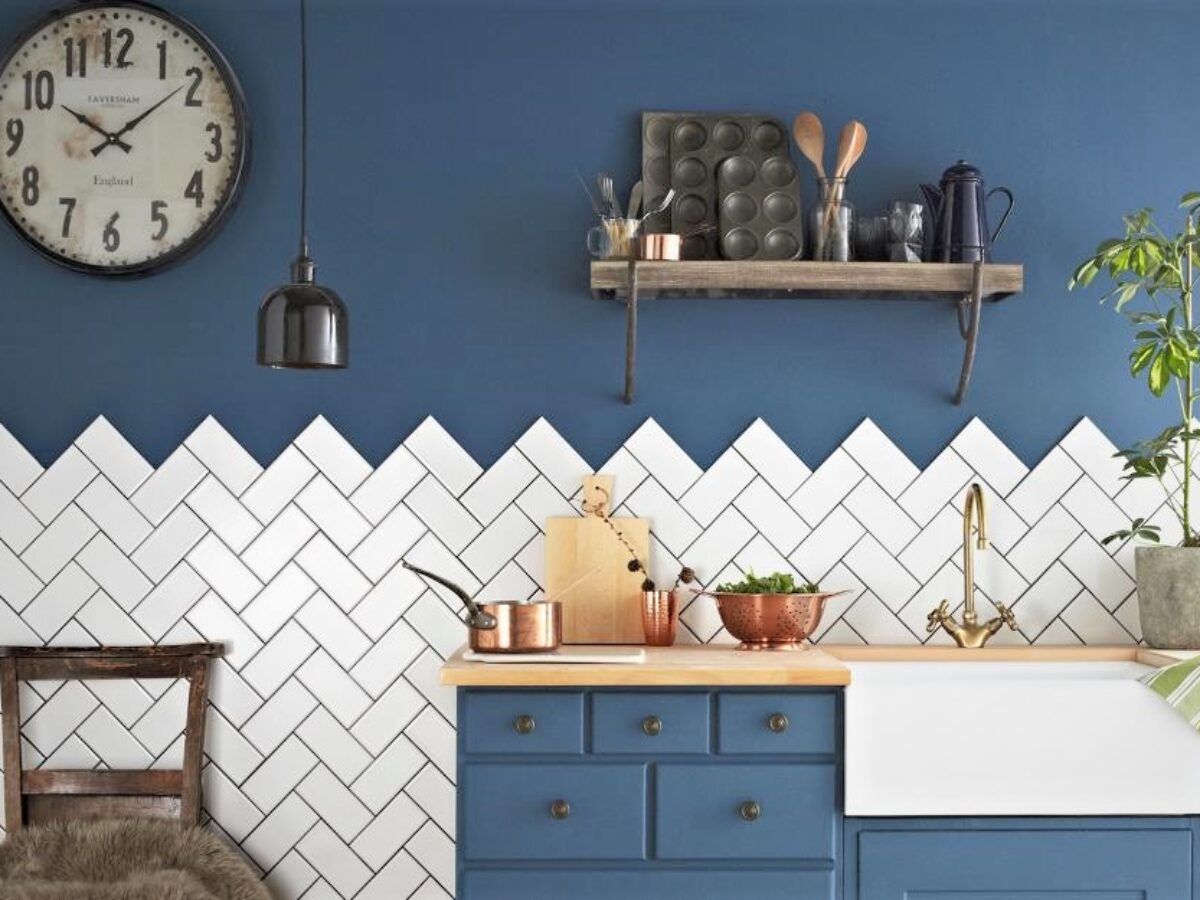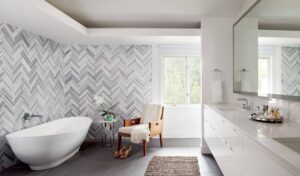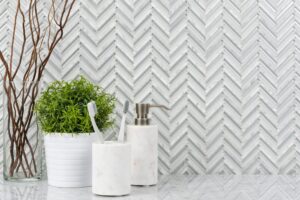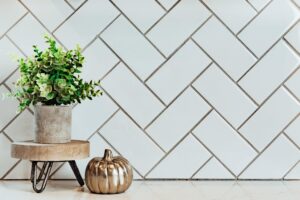Introduction
When it comes to designing a living room that feels both modern and timeless, homeowners are increasingly turning to herringbone tiles. Known for their signature zig-zag pattern, herringbone tiles bring character, depth, and movement into spaces that might otherwise feel flat or uninspired. Once reserved for kitchens and bathrooms, these tiles are now making a bold statement in living rooms—whether as flooring, accent walls, or fireplace surrounds.
In this guide, we’ll explore the history of herringbone, why it’s such a lasting design choice, and how you can incorporate herringbone tile flooring and herringbone tile patterns into your living room for a look that never goes out of style.
The History of Herringbone Tiles
The herringbone pattern has roots as far back as the Roman Empire, where it was used in stone roads for durability and stability. Its distinctive V-shape mimicked the bones of a herring fish, giving it its name. Over time, the pattern evolved into a design element in textiles, wood, and eventually tilework.
Today, herringbone tiles are celebrated in modern home design for their ability to blend history with contemporary style. Their versatility makes them just as suitable for living rooms as for herringbone bathroom tiles and herringbone kitchen tiles.
Why Herringbone Is Timeless in Living Rooms
The enduring popularity of herringbone comes down to a few key qualities:
- Visual movement: The angled pattern naturally draws the eye, adding energy and flow.
- Sophisticated texture: Unlike plain layouts, herringbone introduces subtle elegance without overwhelming the space.
- Adaptability: Works across styles—from Scandinavian minimalism to classic luxury.
- Space illusion: In smaller living rooms, herringbone layouts can make the area feel larger and more dynamic.
Whether you’re creating a cozy family space or a chic entertaining area, herringbone tiles are a design choice that stays stylish through changing trends.
Design Ideas for Herringbone Tiles in Living Rooms
1. Herringbone Tile Flooring
The most popular application for herringbone in living rooms is flooring. Porcelain or ceramic tiles in wood or stone finishes mimic classic parquet floors while offering durability and easy maintenance. Light-colored tiles brighten the space, while darker tones add richness and drama.
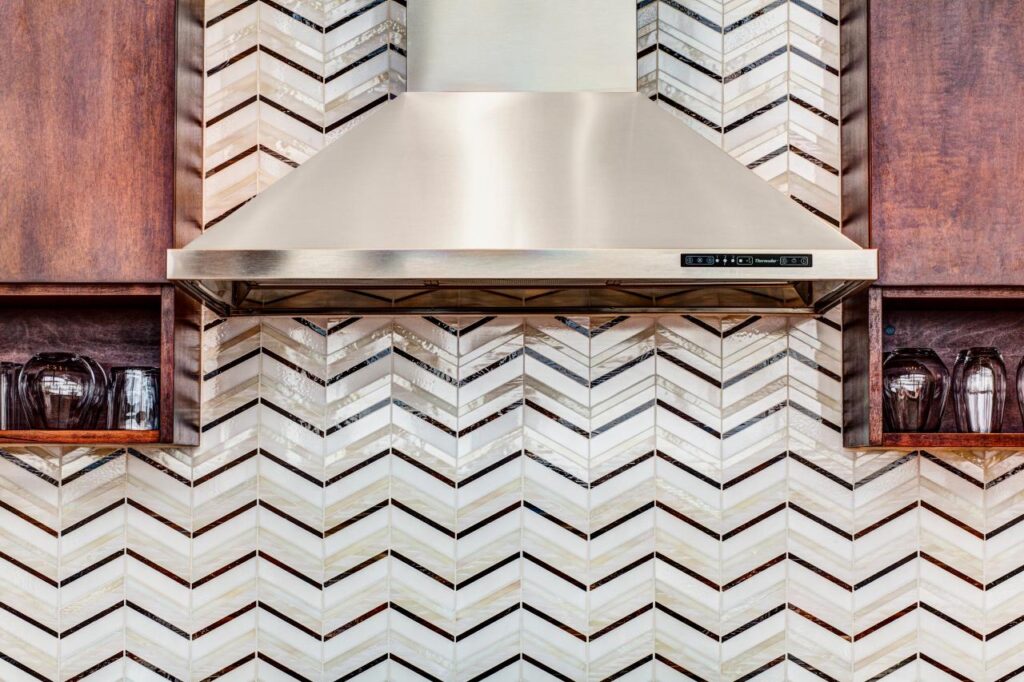
2. Herringbone Accent Wall
For homeowners looking to make a statement, a herringbone accent wall can completely redefine a living room. Consider using stone, marble, or textured tiles behind a sofa or TV wall for a bold focal point.
3. Fireplace Surrounds
A fireplace clad in herringbone tiles instantly becomes a centerpiece. This design works equally well with marble for a luxe finish or matte ceramic for a modern industrial vibe.
4. Open Plan Living
In open-plan homes, herringbone tile flooring helps define the living area while seamlessly connecting it to adjoining spaces like dining rooms or kitchens.
5. Mixed Materials
Combine herringbone tiles with wood, glass, or metal accents to create layered textures. For example, a marble herringbone wall pairs beautifully with natural wood furniture.
Best Tile Materials for Living Rooms
- Porcelain: Durable, low-maintenance, and available in endless finishes.
- Ceramic: Budget-friendly and versatile.
- Marble: Luxurious and timeless, though higher maintenance.
- Natural stone: Creates a rustic or earthy atmosphere.
Each material can be styled in herringbone tile patterns to achieve the desired effect, from modern sleekness to old-world charm.
Installation Tips for Herringbone Tiles
- Plan carefully: Herringbone requires precision—misaligned tiles can throw off the pattern.
- Hire professionals for floors: While DIY is possible for small projects, flooring usually demands expert installation.
- Grout wisely: Matching grout gives a subtle, seamless look, while contrasting grout highlights the zig-zag design.
- Mind the room scale: Use larger tiles in spacious living rooms and smaller ones in compact spaces to maintain balance.
Maintenance Tips for Herringbone Tiles
- Regular cleaning: Sweep or vacuum tile floors to prevent dirt buildup.
- Seal natural stone: Protects against stains and water damage.
- Gentle products: Avoid harsh cleaners that can damage finishes.
- Grout care: Refresh grout periodically to keep lines sharp and clean.
With simple care, herringbone tiles can look beautiful for decades.
Beyond the Living Room: Where Else to Use Herringbone Tiles
While this pattern shines in living rooms, it’s just as effective elsewhere in the home. Herringbone bathroom tiles bring elegance to showers and vanities, while herringbone kitchen tiles create stylish backsplashes. Entryways and hallways also benefit from herringbone flooring, setting a sophisticated tone from the moment you walk in.
Conclusion
Herringbone tiles in living rooms are not just a fleeting trend—they’re a classic design choice that continues to inspire. From herringbone tile flooring to fireplace surrounds and accent walls, this pattern offers homeowners a way to combine timeless elegance with contemporary flair. Whether your living room is large and open or small and cozy, herringbone tiles can help create a space that feels both stylish and enduring.
If you’re ready to elevate your living room design, herringbone is truly a trend that’s here to stay.
FAQs
Herringbone tiles add visual movement and sophistication to living rooms. Their zig-zag layout creates a sense of flow and depth, making even small areas feel more dynamic. They also pair beautifully with a range of materials, from wood-inspired porcelain to luxury marble.
Porcelain and ceramic are practical for living rooms thanks to their durability and low maintenance. For a more luxurious look, marble or natural stone is an excellent choice. The material you choose should align with your budget, lifestyle, and design goals.
Yes, the angled design of herringbone tiles creates an illusion of space and movement. Lighter shades further enhance this effect by reflecting more light, making compact living rooms appear brighter and more open.
Herringbone requires precise alignment, which can make installation more complex than standard layouts. Many homeowners choose professional installers for flooring projects, but DIY is possible for smaller accent areas with careful planning and patience.
Maintenance is simple—regular sweeping or vacuuming prevents dirt buildup, and occasional mopping keeps tiles fresh. If you use natural stone, sealing is recommended to protect the surface. Refreshing grout lines over time also keeps the pattern looking sharp.
Absolutely. Many homeowners use herringbone tiles in the living area and transition to plain tiles or wood in adjoining spaces. This creates visual interest while still maintaining a cohesive, modern home design.

